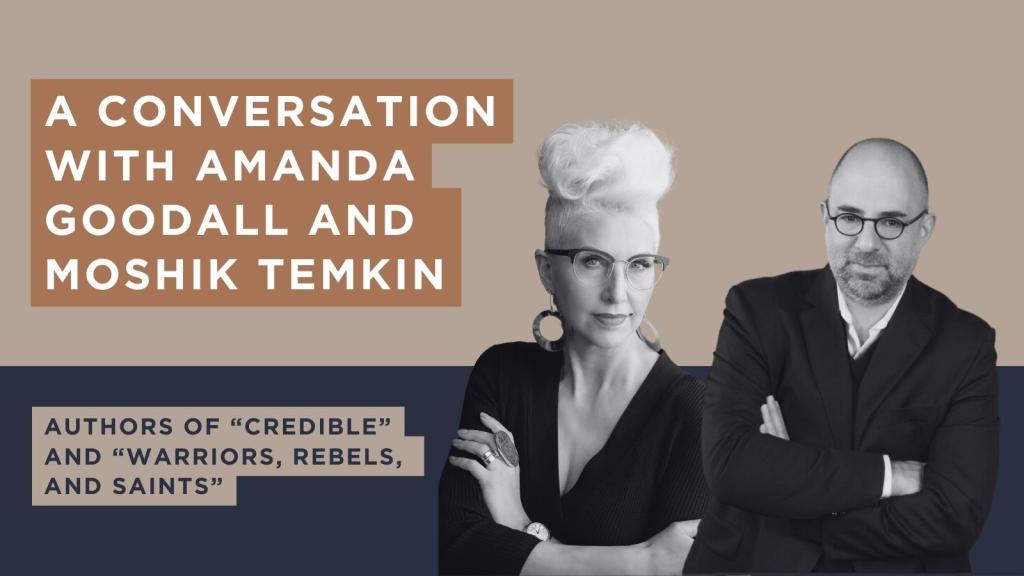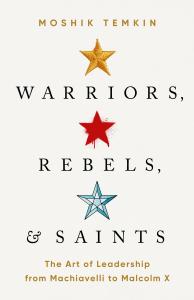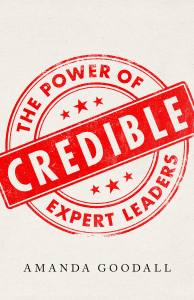Dunking on the “Great Man Theory”A conversation with Moshik Temkin and Amanda Goodall

Why does history move forward? Is it through the constant exchange of goods and ideas, the random forces of God and nature, and the social power of people united behind a cause— or is it because of people (men) who were simply born leaders and then go on to fulfill their destiny?
That final idea, known as the “Great Man Theory,” emphasizes the importance of history’s big names, like Alexander the Great, Napoleon, and George Washington. By focusing on larger-than-life personalities, the theory has long captivated the popular imagination, but two prominent scholars of leadership think that it’s time for a different mental model.
The first is Moshik Temkin, former associate professor of history and public policy at the Harvard Kennedy School. In his latest book, Warriors, Rebels, and Saints: The Art of Leadership from Machiavelli to Malcolm X, Temkin shines a light on leaders who shaped the destiny of entire countries — but you’ve never learned their names.
The second is Amanda Goodall, Director and founder of the Executive Masters in Medical Leadership at Bayes Business School in London. In her latest book, Credible: The Power of Expert Leaders, Goodall argues that choosing flashy CEOs over leaders with genuine expertise is wreaking havoc on the economy.
In the conversation, Temkin and Goodall explain why the “Great Man Theory” is no longer useful and why an alternative can help us better understand the core principles of leadership.
Their interview has been edited for length and clarity.
PublicAffairs: Moshik, your book is called Warriors, Rebels, and Saints. Why did you choose those three categories to describe different leadership styles?
Moshik Temkin: I’ve been teaching about leadership for a while, and I started to see patterns that broke away from an idea that Amanda brings up in her book, the idea of the “Great Man Theory.”
You’ll find this idea in a lot of the literature on leadership, but I’m interested in leadership not just at the top, but also in the middle of society and the bottom of society (though sometimes you can’t even say bottom because certain people are outside any connection to power or authority).
So in the book, warriors represent people willing to stand up and fight for ideas that they believe in or the public or the institutions they represent. For example, these are the people fighting for independence against a colonial power or fighting for civil rights against an oppressive state.
Rebels are the ones who reject the status quo. It’s not just a symbolic or figurative rebellion. It’s often very real, and people are willing to kind of leave everything behind and go underground, as was the case of the French resistance or the young women who fought against the Trujillo dictatorship in the Dominican Republic.
Finally, we don’t necessarily associate saints with leadership, but these people embody sacrifice. They’re leaders who understand that in order to bring about change, they have to give up what is most valuable to them. This could be someone like Gandhi or Martin Luther King, Jr.
PA: I know these are your conceptual categories, but do you think that the leaders themselves would identify in the same ways? Like, would Gandhi say he was a saint and FDR would say he was a warrior?
MT: It’s difficult to say for some, but for others that’s definitely the case. To go back to Martin Luther King Jr. and also his contemporary, Malcolm X, they both died very, very young. They were both 39 when they were killed, and they both knew that they were, in a sense, destined to die young. They talked about it, and it was part of their leadership message. So, it’s not that they were saints in their behavior, necessarily, but we can consider them saints afterward because of how far they were willing to go in terms of leadership.
PA: Amanda, as Moshik pointed out, your book wrestles with the idea of the “Great Man Theory.” Why do you argue against it?
Amanda Goodall: When it comes to leadership, it’s become troublingly common to put unqualified people into top jobs. I open the book with an example from the U.K., where I live. In 2009, the British Parliament questioned Andy Hornby, the CEO of HBOS, one of the largest financial institutions in Europe. At just 42 years old, Hornby was one of the youngest managers of a major bank on the continent, but he had what many people consider to be the golden ticket of credentials: an MBA from Harvard Business School. There was just one problem: Hornby had no formal banking qualifications.
Instead of focusing on sound, long-term business goals, Hornby pushed the bank to pursue riskier loans to maximize short-term profits,which led to a £213 billion gap between loans and expenses and resulted in a £20 billion taxpayer-funded bailout. It also helped accelerate the global financial crisis.
But Hornby wasn’t alone. Of the four senior bankers that were questioned that day, none had formal banking qualifications. From their resumes, you could argue that these were “great men,” but they were also stunningly unqualified for the jobs they had assumed, and that’s part of a larger trend of valuing generalists over all else.
PA: Is this problem confined to a specific time and place? Meaning, was this just a problem in finance in the early 2000s?
AG: No, this general slide toward generalists like consults and business school grads has been happening for decades and in industries as disparate as Formula 1 racing to aeronautical engineering to education. Over and over again, the same pattern emerges: generalists underperform compared to experts from those fields. That might be more palatable if these middle managers were particularly competent, but they aren’t. As one study found, the longer that uninformed executives stayed in their roles, the less they deferred to experts and the less they were able to identify competence in others.
PA: Moshik, in the book you have a chapter on FDR, someone who many would consider a “great man.” How was your read of him different from the traditional way?
I wanted to write about FDR as someone who made a lot of compromises from within. He and his wife both came from elite families, but they understood that they had to have a connection with the people outside of their world. They called it noblesse oblige, the responsibility of privileged people to help those less fortunate. To prevent the U.S. from going down the path of Nazi Germany or fascist Italy, they had to keep the social fabric at a basic level. They had to make sure that people had freedom from want and freedom from fear.
During the Great Depression, I consider FDR a warrior in the sense of not just fighting a war, which he also did, but in the sense of fighting the entrenched power that was determined to prevent him from protecting the well-being of the people. In that way, it’s not hard to understand why FDR’s staunchest enemies and fiercest haters were usually people from his own socioeconomic background, which really speaks to what a warrior he was — and also a bit of a rebel.

